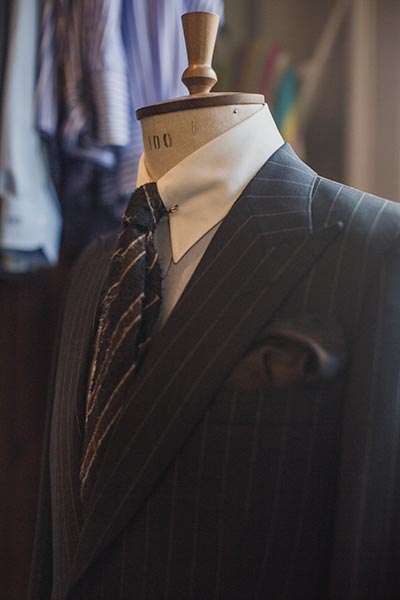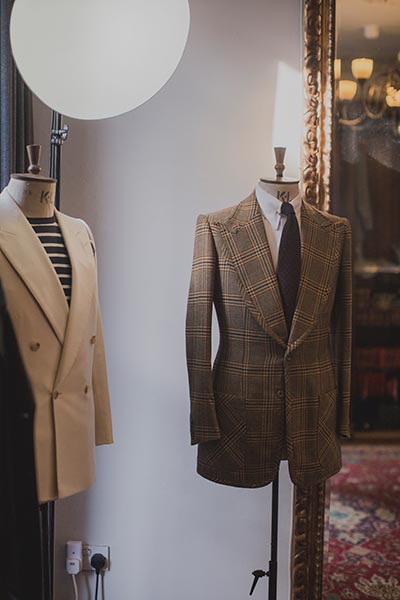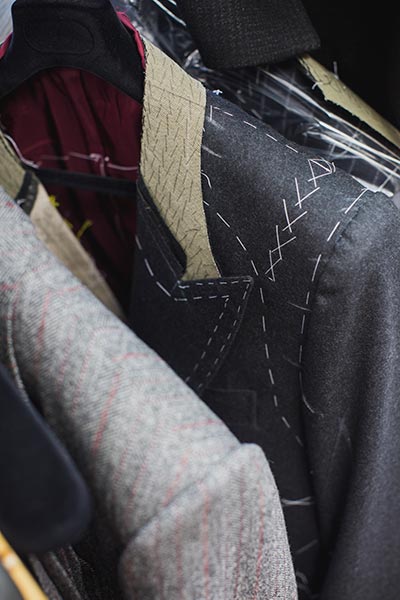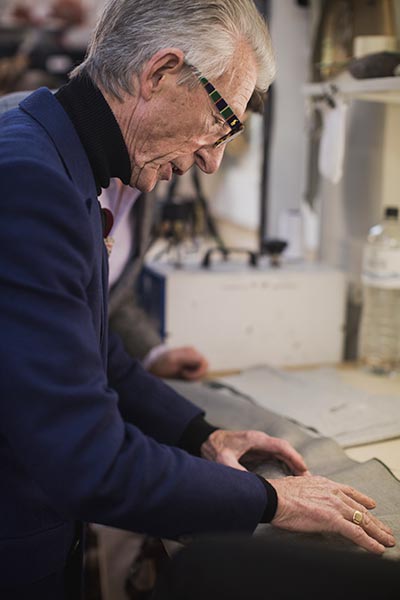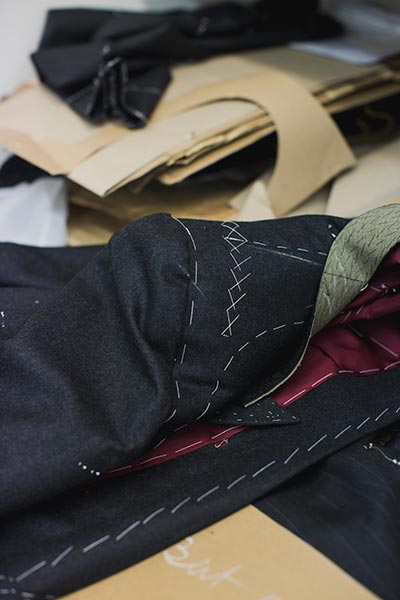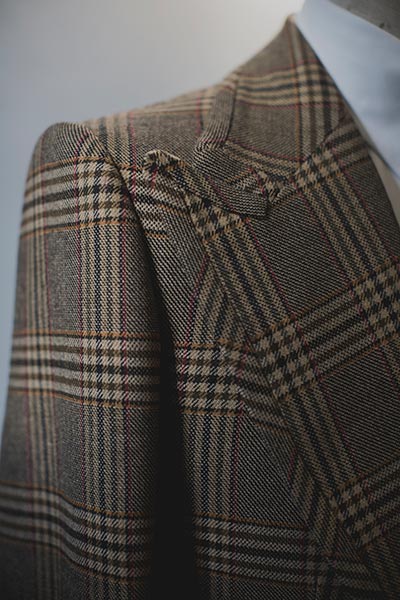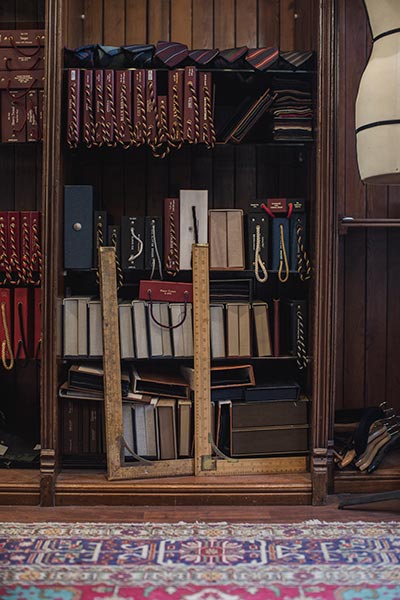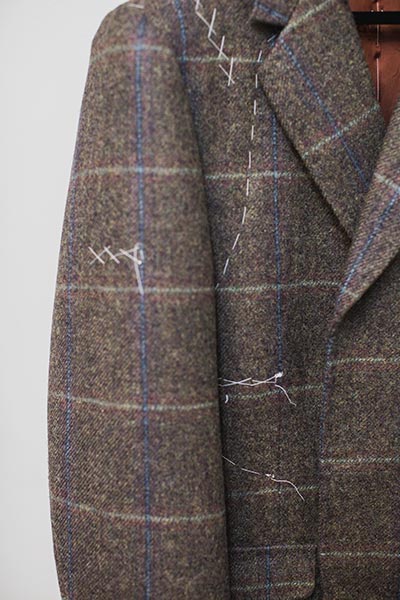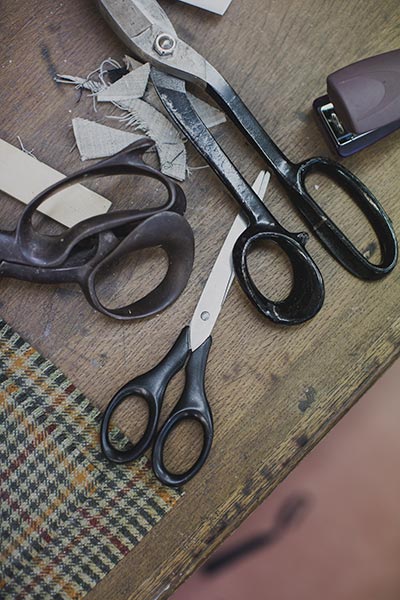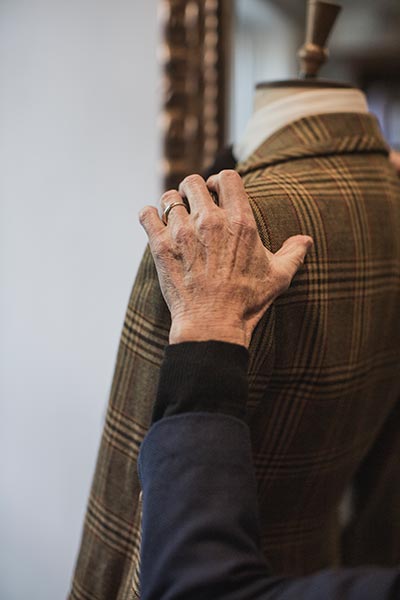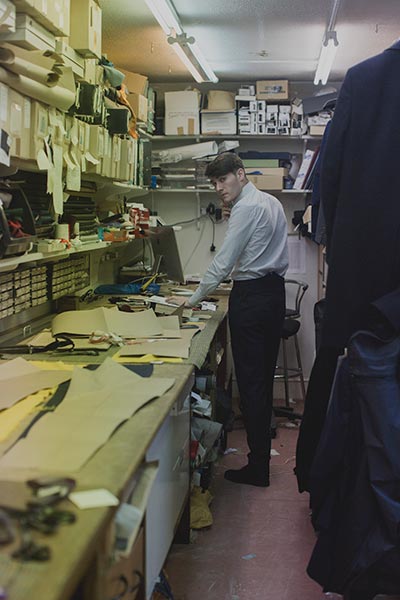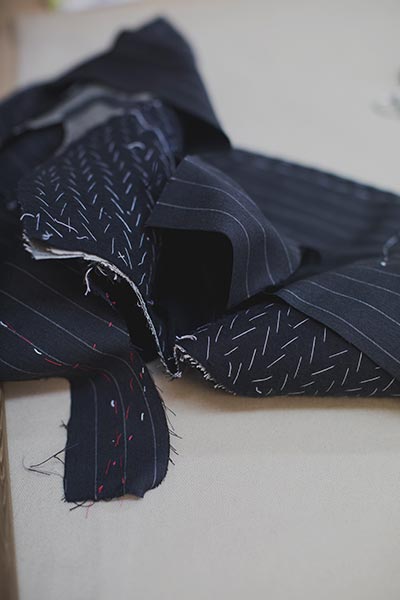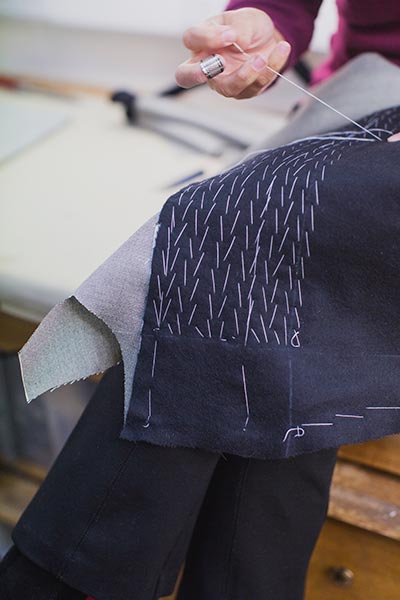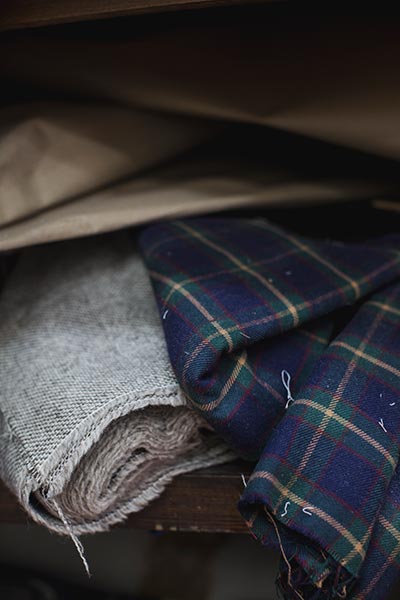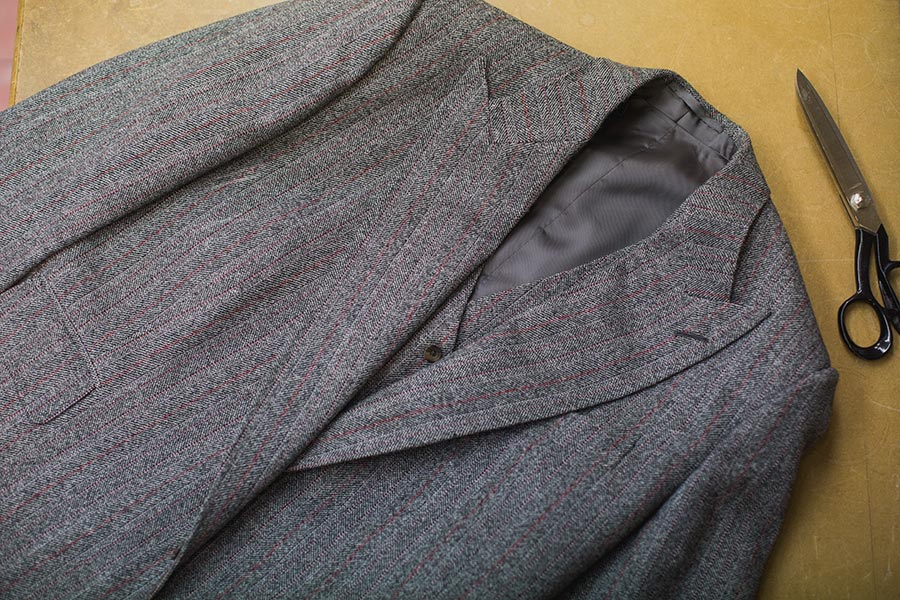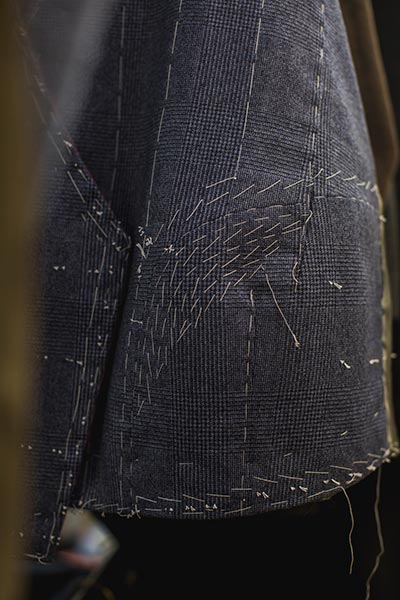We’re not just talking, here, about a key player in Savile Row’s post-war narrative – Edward Sexton is the sole-surviving leading man: one of a pair of tailoring mavericks who, by blending the cutting-edge sartorial swagger of Swinging Sixties London with traditional Savile Row craftsmanship, saved the latter from sinking into obsolescence. Not that he’ll take any credit for it. “You couldn’t orchestrate what happened with us,” says the now septuagenarian Sexton. “Lots of things happened to us that were a total fluke.”
These days, Sexton operates not on The Row, or even strictly speaking just off it, but a brisk walk across Mayfair, into the rarefied surrounds of Knightsbridge and up a narrow staircase wedged between the antique shops and fashion boutiques of Beauchamp Place. “If you go to Italy, or France, all the top tailors have a first-floor atelier,” he says, settling into a chair for our interview. “I’ve always believed in a working showroom, where the client comes in and sees and senses hand-craftsmanship going on.”
It’s now almost five decades since Sexton and his colleague-turned-business partner Tommy Nutter happened upon a tonic for the British capital’s ailing tailoring scene. “London was changing,” Sexton recalls, his brutally elegant cockney accent undiminished by the ultra-refined milieu in which he plies his trade. “You had the King’s Road, Carnaby Street, a lot of new money around, rock stars… But even people with money couldn’t necessarily find the quality they were looking for. Particularly the musicians – they were very artistic and talented, not just in their music but in other ways. They just wanted to have nicer, better quality clothing.”
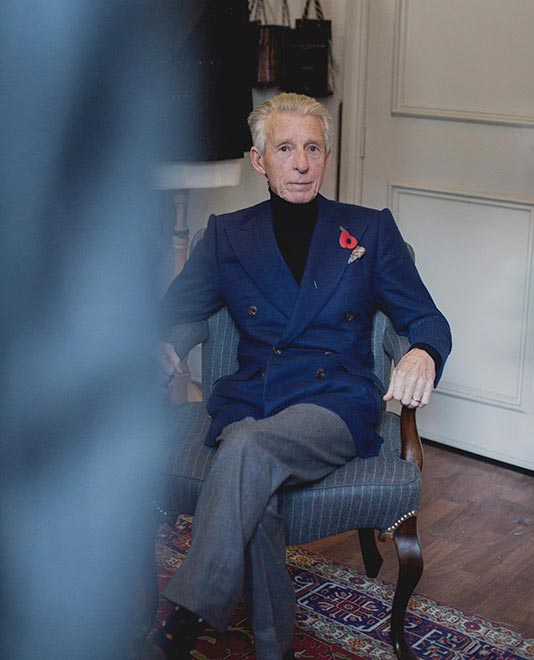
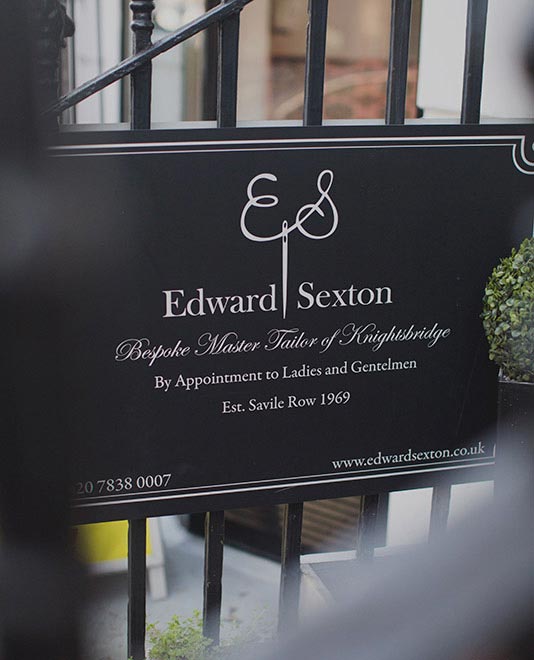
Founder Edward Sexton.
Sexton had cut his tailoring teeth at Kilgour’s, the Savile Row tailor famous for its full drape coats, and at Harry Hall in Regent Street. “That was an equestrian tailor – riding jackets, hacking jackets, breeches, jodhpurs and so on – so I came to like that longer jacket with a nice flared shape,” he says of the style sensibilities that would soon find expression on the rakish forms of Britain’s rock royalty. “I was also always interested in the 30s, the 40s, the romantic period. Pin collars, tabs, all that – a very nice, neat look; the strong shoulder line. I liked all that.”
The friendship which revolutionised British tailoring began in 1967 when Sexton went to work as a cutter at Donaldson, Williams and Ward in Burlington Arcade. “Tommy was working as a front-of-shop salesman,” he recalls. “We’d go and have a pint after work and chat about style, and came up with this look that we were both very keen on – longer than average, waisted and flared.” Then, one day, Nutter told Sexton that he’d been offered some capital to start up a tailoring company – Cilla Black and Beatles executive Peter Brown were among the consortium – and the pair set up Nutters of Savile Row on February 14th 1969. It was the street’s first new establishment in 120 years.
“Electric” is the word Sexton uses to describe his working relationship with Nutter. “In any business you need finders, minders and grinders to make it all really flow and work,” he says. “Tommy was the finder - he was very social and had great connections. I’d term myself as the minder and the grinder. I ran the workshop, I did the cutting, I did the fitting.” The pop cultural big-hitters soon came in their droves. “You’d have The Beatles, you’d have Elton John, you’d have Mick Jagger, you’d have Bianca, Yoko and John Lennon, and they’re all coming in and out like it’s a club… That was the initial kick of the business. But then we had a lot of captains of industry as well – Rupert Murdoch, Kerry Packer, Sir Paul Hamlyn – so our clientele was very mixed. They all wanted that touch of freshness and youth in their clothes, because they were young then too.”
Inevitably, such a celebrity haunt soon drew media attention, too. “Savile Row suddenly started getting a lot of press and we were responsible for it,” he says, and soon, their neighbours began to emulate them. “We had a window display – which no one else on Savile Row had at that time – and they were quite exotic. We’d have dustbins with stuffed rats crawling out of them amongst all the beautiful garments… Next thing we know, other Savile Row tailors’ curtains start coming down to be replaced with mannequins in the window, and the whole thing started to change.” Another way Sexton and Nutter bucked convention was by making women’s clothes, which was unheard of at the time (Sexton later collaborated with Stella McCartney), while Lennon and Ono’s jumpsuits surely furrowed eyebrows elsewhere on The Row.
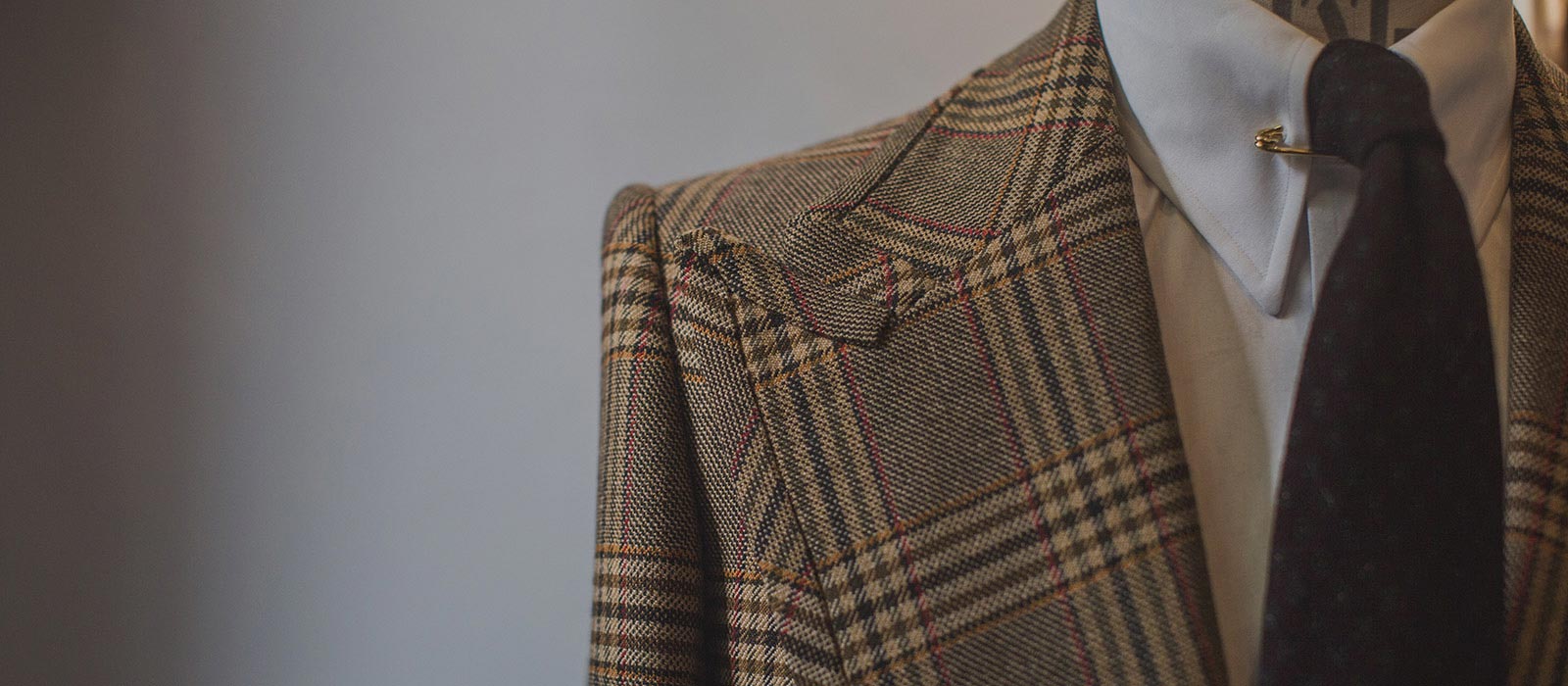
Yet Sexton insists the pair never planned to reinvent the most famous street in global menswear. Everything about the revolution Sexton and Nutter instigated, he says, was unplanned – including the massive publicity coups (“The Beatles crossing the road in suits we’d made on the Abbey Road album cover – who could have orchestrated that bit of PR?” he says, shaking his head in disbelief at the memory of it all). But it would be churlish to put the two men’s success down to luck alone. Sexton and Nutter struck upon a formula which did for sartorial culture what the men they dressed were doing for popular music, and it was a rich chapter in British tailoring history that ended when the pair went their separate ways in 1976.
Nutter died aged just 49 in 1992 but, almost a quarter of a century later, Sexton shows no signs of hanging up his sheers for the foreseeable. His fanatical eye for detail and proportion is as keen as ever, his on-going love of his vocation unwavering – something which comes down, at least in part, to the materials, in the literal sense of the word, involved: “Merino wool behaves itself when being tailored,” he says. “It’s got recovery – when you squeeze it, it springs back. I’d always rather put my work into Merino wools, knowing it’s going to guarantee me, the client, and everyone involved a success.”
Whether it’s down to improvements in the basic raw materials of his craft, or the gilded memories of hoisting Savile Row’s tenets onto the crest of the late-60s cultural zeitgeist, Sexton is a man with an inexhaustible supply of vocational passion. “I’m 74 now,” he says, “and I’m as enthusiastic and excited to come to work as I was as a young man.”
